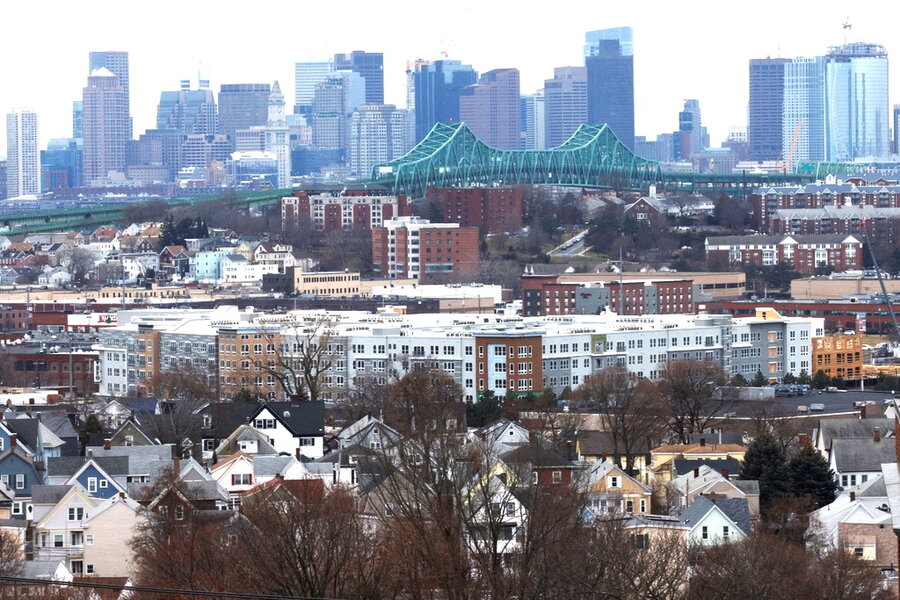Zoning for shared affluence
Loading...
The U.S. elections next year may well again reinforce a narrative of a country divided on most any issue. Yet on one hot topic – a shortage of available and affordable homes – there appears to be a strikingly optimistic and unifying political view.
“Interest in zoning reform is a rare spot of bipartisan agreement,” writes Noah Kazis, a law professor at the University of Michigan, in a newly published compendium. “This is a moment of ferment – and experimentation – in land use policy.”
One example: A Sightline public survey of residents in Washington state in February showed that 72% – Republican and Democrat, urban and rural – supported a proposal to eliminate local zoning laws allowing only single-family houses in cities with populations over 6,000. That represents a 10-point increase from just a year ago.
The current scarcity of homes, estimated at 2.3 million for both single- and multi-family housing, is partly a result of more than a century of laws that shaped local housing markets. Many markets were skewed by race or by attempts to exclude low-income buyers. Yet lately another factor has been work. Since the pandemic, an increase in remote work has enabled more people with high-wage jobs to move into low-priced housing markets. As a result, more residents in a growing number of smaller cities face more competition in finding a home.
Factors like those are helping to drive a shift in attitudes from NIMBY (not in my backyard) to YIMBY (yes in my backyard) as cities, states, and the federal government strive to lift building restrictions and rewrite tax codes to construct more dwellings. Many reform proposals in state legislatures and Congress have bipartisan sponsors, such as a Senate bill jointly drafted by Republican Todd Young and Democrat Brian Schatz.
Minneapolis helped kick-start housing reforms at the urban level in 2018. In the years since, a focus on scarcity has intersected with growing imperatives to reduce the wealth gap between races. San Francisco wove housing reforms into proposals for reparations earlier this year. Los Angeles lifted single-family zoning restrictions to encourage more density. Even ritzy neighborhoods like Beverly Hills have warmed to erecting town houses.
That momentum is grounded in shared values, notes Richard Kahlenberg, a former senior fellow at The Century Foundation. “Zoning seems like a technical topic, but it touches many of the issues Americans care about most deeply,” he wrote in a new book. A growing number of studies, for example, have shown that investments in affordable housing contribute measurably to childhood academic success.
Montana has lately set one model for reform. In recent years, an influx of remote workers has helped drive up housing prices, shutting many residents out of the market. Gov. Greg Gianforte responded by setting up a task force. Within five months it produced dozens of ideas leading to legislation this year that carefully balances state and local authority in housing decisions.
The key lesson, a Mercatus Center study found, is that any debate over housing reform welcome both dissent and scrutiny while aiming for greater inclusivity within a community. “Even in states that experienced high-profile failures,” it noted, “the issue of housing supply has become an ongoing priority.”
This rare moment of bipartisan approaches to housing – one that balances individual gain with shared prosperity – could be a model for American politics.







